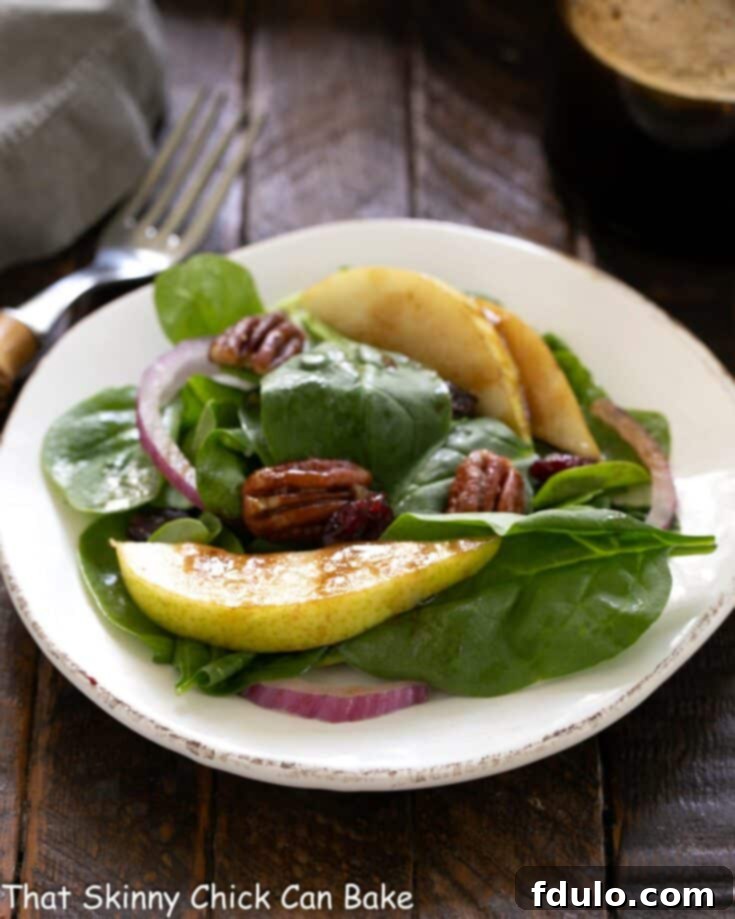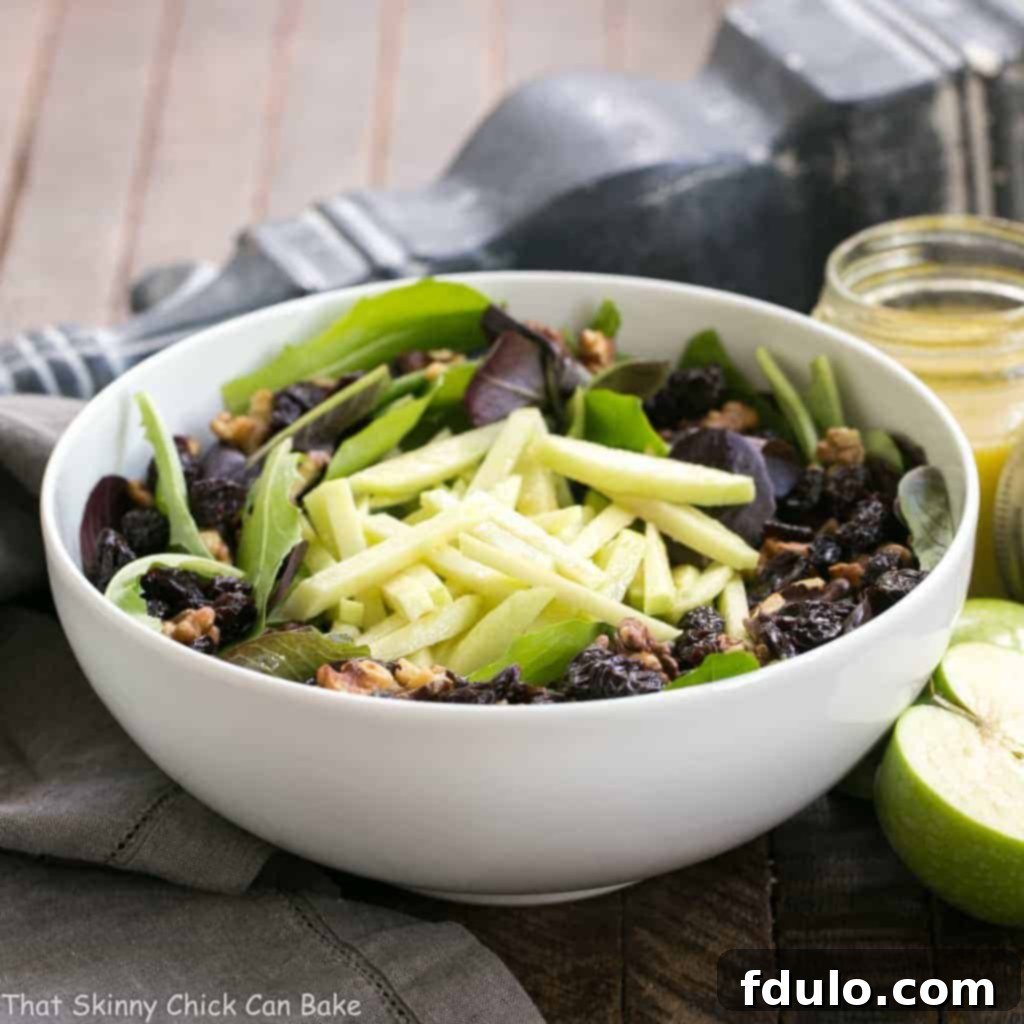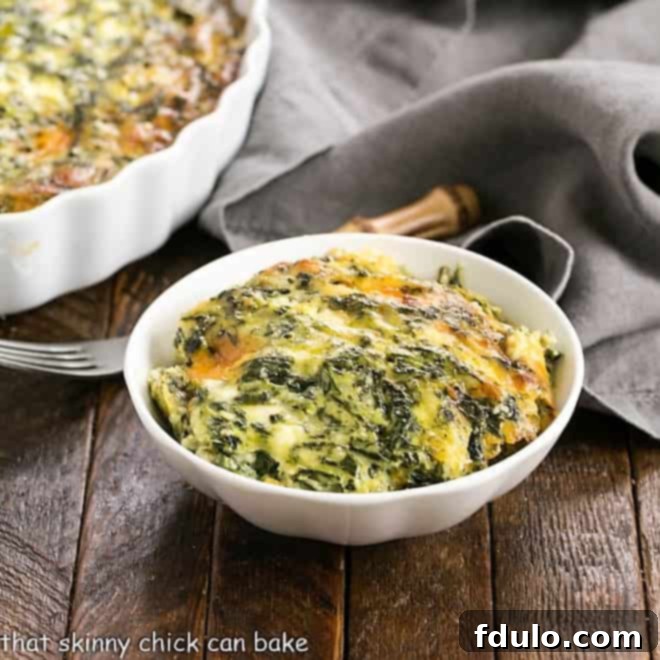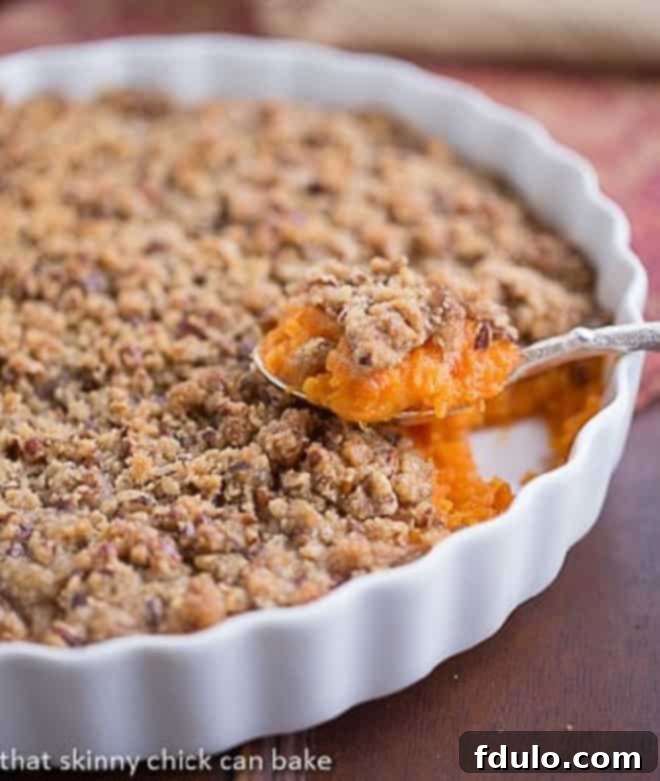Roasted Fall Vegetables are a truly exceptional and easy-to-prepare holiday side dish, especially when they feature the harmonious combination of sweet butternut squash, earthy Brussels sprouts, and tart cranberries. This vibrant medley is a snap to make and promises to bring both festive flavor and a beautiful splash of color to your holiday table, or any autumn gathering. It’s an unforgettable dish that perfectly captures the essence of the season.
The inspiration for this magnificent dish came from a recent fundraiser where my friend, Kate, and I had the pleasure of being “celebrity” chefs. After serving our own culinary creations, we sampled the array of party fare available to guests. Among the many delectable options, a plate of perfectly cooked Oven-Roasted Vegetables stood out. The flavors were so compelling that we immediately knew we had to recreate them. This recipe is my loving tribute to that memorable experience, perfected with a few personal touches!
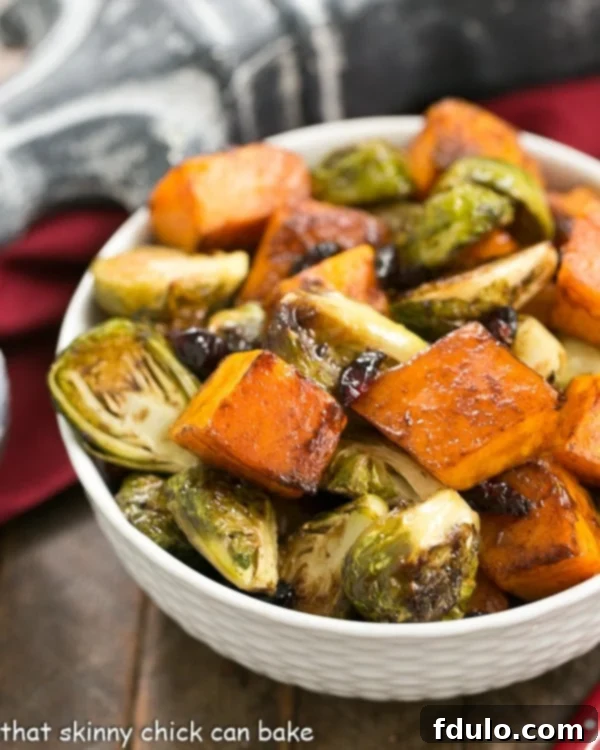
Why These Roasted Fall Vegetables Are a Must-Make
There are countless reasons why this roasted vegetable recipe should become a staple in your autumn and winter repertoire. Beyond its stunning visual appeal, the depth of flavor and ease of preparation make it an absolute winner.
- A Truly Memorable Side Dish: This isn’t just any roasted vegetable recipe. The thoughtful combination of butternut squash, Brussels sprouts, and dried cranberries creates a complex flavor profile that tantalizes the taste buds. The sweetness of the squash, the slightly bitter and nutty notes of the Brussels sprouts, and the tangy burst from the cranberries come together in perfect harmony. It’s a symphony of textures and tastes that elevates a simple side dish into a main attraction, making it far more memorable than single-vegetable roasts. This blend ensures every bite is interesting and engaging, providing a delightful contrast that complements any main course, especially during festive seasons.
- Incredibly Versatile for Customization: While the core recipe is fantastic, it’s also wonderfully adaptable. You can easily shake things up by adding other favorite fall vegetables like carrots, parsnips, sweet potatoes, or even red onions for an extra layer of sweetness and aroma. For an added textural crunch and a boost of healthy fats, consider tossing in some toasted pecans, walnuts, or even pumpkin seeds in the final minutes of roasting. A sprinkle of fresh herbs like thyme or rosemary can further enhance the aromatic qualities, allowing you to tailor this dish to your personal preferences and whatever produce you have on hand.
- Elevated with a Dijon Mustard Balsamic Vinaigrette: Forget simply roasting with a basic drizzle of olive oil, salt, and pepper. While that can be delicious, this recipe takes it up a notch with a sensational Dijon Mustard Balsamic Vinaigrette. This homemade dressing adds a rich, tangy, and slightly sweet glaze that caramelizes beautifully in the oven, imparting an incredible depth of flavor that a simple seasoning can’t match. The mustard acts as a fantastic emulsifier, creating a smooth and luscious coating, while the balsamic vinegar provides that perfect acidic counterpoint to the sweetness of the squash and cranberries. This vinaigrette is the secret weapon that truly transforms ordinary vegetables into an extraordinary culinary experience.
Mastering the Art of Roasting Vegetables
Roasting is one of the easiest and most flavorful ways to prepare vegetables. The high heat of the oven brings out their natural sweetness, creating a delightful caramelization on the outside while keeping the inside tender. Follow these simple steps for perfectly roasted vegetables every time:
- Preheat Your Oven Thoroughly: Always start with a properly preheated oven. For roasted vegetables, a temperature of 400-425°F (200-220°C) is ideal. A hot oven ensures that the vegetables begin to caramelize immediately upon hitting the pan, leading to crispier edges and a more developed flavor, rather than steaming them.
- Uniformly Cut Your Vegetables: This is a crucial step for even cooking. Cut all your chosen vegetables into similar-sized pieces. For hard vegetables like butternut squash and Brussels sprouts, aiming for 1 to 1.5-inch cubes or halves works well. If pieces are too disparate in size, some will burn while others remain undercooked.
- Strategically Add Hard and Soft Vegetables: If your medley includes a mix of dense, slower-cooking vegetables (like potatoes, carrots, squash) and softer, quicker-cooking ones (like bell peppers, asparagus, onions), don’t add them all at once. Begin roasting the harder vegetables first. About halfway through their cooking time (typically after 10-15 minutes), add the softer vegetables to the pan. This staggered approach ensures everything finishes cooking at the same time, preventing mushy or burnt components.
- Utilize a Rimmed Sheet Pan with Ample Space: For optimal roasting, spread your vegetables in a single layer on a large, rimmed baking sheet. Ensure there’s enough room between the pieces; overcrowding the pan is the most common mistake. When vegetables are too close together, they release moisture and essentially steam rather than roast, resulting in soggy rather than crispy textures. Use two sheet pans if necessary to give them space.
- Coat and Season Liberally: Drizzle the vegetables with a good quality olive oil (or another high-heat cooking oil like avocado oil) and toss them thoroughly to ensure every piece is lightly coated. This oil helps with browning and prevents sticking. Then, season generously with kosher salt and freshly ground black pepper. These basic seasonings enhance the natural flavors of the vegetables. Roast for about 20-25 minutes, or until tender-crisp. You want them cooked through but still retaining a slight bite, not overly soft or mushy.
- Introduce Final Flavor Boosters: In the last few minutes of roasting, after the vegetables have softened and started to caramelize, add the dried cranberries. Then, pour your prepared Dijon Balsamic Vinaigrette over the vegetables and toss gently to coat. Return the pan to the oven for just 3-5 more minutes. This brief final roast allows the cranberries to plump slightly and the vinaigrette to warm through and cling to the vegetables, infusing them with its vibrant flavor without burning.
- Serve Hot and Enjoy: Roasted vegetables are best served immediately, straight from the oven, while they are still warm and their textures are at their peak. Transfer to a serving dish and admire the beautiful colors and enticing aroma before digging in!

Expert Tips for Perfect Roasted Vegetables
Achieving perfectly roasted vegetables is simpler than you might think, but a few insider tips can make all the difference, ensuring consistent, delicious results every time. Here’s how to elevate your roasting game:
- Ensure Uniform Cuts for Hard Vegetables: As mentioned, cutting denser vegetables like butternut squash, potatoes, and Brussels sprouts into pieces of roughly the same size is paramount. This guarantees that they cook evenly and are all tender at the same time. Inconsistent sizing can lead to some pieces being burnt while others remain raw.
- Timing is Key for Softer Ingredients: More delicate or thinner ingredients such as sliced onions, minced garlic, asparagus spears, bell peppers, or zucchini cook much faster. To prevent them from burning or becoming overly soft and mushy, incorporate them later into the roasting process. A good rule of thumb is to add them to the baking sheet during the last 10-15 minutes of the harder vegetables’ cooking time.
- Thorough Oil Coating is Essential: Before you even think about seasoning, ensure all your vegetables are lightly but completely coated in oil. This thin layer of oil is crucial for two reasons: it promotes beautiful browning and caramelization (the Maillard reaction), and it helps the salt, pepper, herbs, and any other seasonings adhere uniformly to each piece, distributing flavor evenly.
- Experiment with Fresh or Dried Herbs: Herbs can truly transform the flavor profile of your roasted vegetables. For an earthy and aromatic touch, I highly recommend adding fresh thyme sprigs or rosemary needles to the pan before roasting. Other wonderful options include dried sage for a more autumnal feel, oregano for a Mediterranean twist, or even a hint of crushed red pepper flakes for a subtle kick.
- How to Check for Doneness: The best way to determine if your vegetables are perfectly roasted is by piercing them with a sharp knife or a fork near the end of the cooking time. If the knife inserts easily with minimal resistance, they are done. Don’t rely solely on visual cues, as some vegetables might look done but still be firm inside. Aim for tender-crisp, not mushy.
- Stir Periodically for Even Browning: To ensure that all sides of your vegetables achieve that desirable golden-brown caramelization and to prevent any pieces from burning, make sure to stir or flip them once or twice throughout the roasting process. This simple action helps distribute the heat and oil, promoting even cooking and color.
- Mastering the Vinaigrette Emulsification: Achieving a thick, homogeneous, and stable vinaigrette is easier than you think. The trick to a perfectly emulsified dressing (where oil and vinegar combine rather than separate) is patience. First, whisk together all the non-oil ingredients—vinegar, mustard, salt, pepper—in a bowl. Then, with one hand constantly whisking vigorously, slowly drizzle in the olive oil in a very thin, steady stream with the other hand. The mustard acts as an emulsifier, helping the oil and vinegar bind together, creating a beautiful, cohesive dressing that coats the vegetables perfectly.
Frequently Asked Questions About Roasting Vegetables
For most vegetables, a high oven temperature is key to achieving that delicious caramelization and tender interior. Temperatures between 400°F (200°C) and 425°F (220°C) are generally considered ideal. For this specific recipe, 400°F works wonderfully, allowing the butternut squash and Brussels sprouts to cook through while developing lovely browned edges. Higher temperatures like 425°F are also commonly used, especially if you prefer a slightly crispier result and have denser vegetables that can handle the heat.
The roasting time for vegetables varies significantly depending on their type, density, and size of the cut pieces. Denser, harder vegetables like butternut squash, potatoes, carrots, and Brussels sprouts will naturally take longer, typically ranging from 20 to 40 minutes. Softer vegetables such as bell peppers, onions, asparagus, or zucchini will cook much faster, often in 10-20 minutes. Always use the time suggested in a recipe as a general guide. When roasting for the first time, start checking for doneness around the 15-minute mark by piercing a piece with a sharp knife. If it offers little resistance, they’re done. If they’re still hard, continue roasting and recheck every 5-7 minutes until they reach your desired tenderness.
You can roast almost any vegetable imaginable, and many vegetables truly shine when exposed to high heat. Some, like the cruciferous family, are particularly transformed by roasting. Brussels sprouts and cauliflower, for instance, can sometimes give off a sulfuric odor when boiled, but roasting brings out their incredible natural sweetness and nutty flavors. Other incredibly delicious vegetables to roast include cauliflower, Brussels sprouts, asparagus, broccoli, bell peppers (especially red and yellow), zucchini, sweet potatoes, regular potatoes (Yukon Gold or Russet), green beans, carrots, parsnips, beets, onions, and mushrooms. Roasting intensifies their flavors, creates appealing textures, and caramelizes their natural sugars, making them irresistible!

Stay connected and share your culinary creations with me! You can find me on social media: Instagram, Facebook, and Pinterest. Don’t forget to tag me (@thatskinnychickcanbake) when you try one of my recipes! If you love the results as much as I do, please consider leaving a 5-star rating and comment on the blog post – your feedback is greatly appreciated and helps others discover these delicious recipes.
More Delightful Autumn Side Dishes
As the leaves change and the air turns crisp, our kitchens beckon with the promise of warm, comforting, and flavorful dishes. Beyond these incredible Roasted Fall Vegetables, there are many other seasonal recipes that are perfect for fall entertaining and Thanksgiving feasts. Explore some of my other favorite autumn side dishes that will complete your festive table:
Autumn Side Dish Recipes
Seasonal recipes that are perfect for fall entertaining and Thanksgiving.
Arugula Salad with Roasted Butternut Squash
A delicious salad from Ina Garten that is easy and impressive!
Continue Reading
Spinach Salad with Pears, Cranberries and Candied Pecans
A tasty spinach salad filled with pears, dried cranberries, and candied pecans!
Continue Reading
Apple, Cherry, Walnut Salad
A terrific fall salad with apples, dried cherries and nuts!
Continue Reading
Cheesy Spinach Souffle
Made with defrosted frozen chopped spinach, this is an easy side dish for the holidays!
Continue Reading
Praline Topped Sweet Potato Casserole
A sweet potato casserole with a delicious brown sugar and pecan topping.
Continue Reading
Roasted Autumn Vegetables Recipe

20 minutes
30 minutes
50 minutes
6 servings
A medley of vegetables roasted with a balsamic vinaigrette.
Ingredients
- 1 pound Brussels sprouts, trimmed and cut in half
- 1 Butternut squash (1½-2 pounds), peeled, seeds removed and cut into 1 -1½-inch cubes
- 2 tablespoons olive oil
- ½ teaspoon kosher salt
- Freshly ground black pepper, to taste
Vinaigrette:
- 1 tablespoon aged fig, currant or standard balsamic vinegar (should be thick and syrupy)
- ⅛ teaspoon kosher salt
- Freshly ground black pepper, to taste
- ¼ teaspoon Dijon mustard
- 2 tablespoons olive oil
- 3 tablespoons dried cranberries
Instructions
- Preheat the oven to 400ºF (200ºC).
- In a large bowl, combine the trimmed Brussels sprouts and cut butternut squash. Drizzle with 2 tablespoons of olive oil, ½ teaspoon of kosher salt, and freshly ground black pepper. Toss well to ensure all vegetables are evenly coated. Spread the seasoned vegetables in a single layer over a large, rimmed baking sheet.
- Roast for 20-25 minutes, or until the vegetables are tender but still retain some firmness, and begin to caramelize. Halfway through the roasting time (around 10-12 minutes), gently toss the vegetables on the baking sheet to ensure even cooking and browning.
- While the vegetables are roasting, prepare the vinaigrette.
- In a small bowl, whisk together the balsamic vinegar, ⅛ teaspoon of kosher salt, freshly ground black pepper, and Dijon mustard. Gradually add the remaining 2 tablespoons of olive oil in a slow, steady stream while continuously whisking until the mixture is well emulsified and slightly thickened. Taste and adjust seasonings as needed.
- Once the vegetables are roasted, remove them from the oven. Drizzle the prepared vinaigrette evenly over the hot vegetables and sprinkle with the dried cranberries. Toss gently to combine, making sure the vegetables and cranberries are well coated with the dressing. Return the baking sheet to the oven for another 3-5 minutes to allow the flavors to meld and the cranberries to soften slightly. Serve immediately and enjoy!
Notes
I typically use a high-quality, aged balsamic vinegar for its rich, syrupy consistency and depth of flavor. If you’re using a standard balsamic vinegar that isn’t as thick or sweet, you might consider adding a small amount (½ to 1 teaspoon) of honey, maple syrup, or a pinch of sugar to the vinaigrette to achieve a similar balance of sweetness and tanginess.
Recommended Products
As an Amazon Associate and member of other affiliate programs, I earn from qualifying purchases.
- OXO Good Grips 11-Inch Better Balloon Whisk
- USA Pan Bakeware Half Sheet Pan, Warp Resistant Nonstick Baking Pan, Made in the USA from Aluminized Steel – 1050HS
Nutrition Information:
Yield:
6
Serving Size:
1
Amount Per Serving:
Calories: 210
Total Fat: 10g
Saturated Fat: 1g
Trans Fat: 0g
Unsaturated Fat: 8g
Cholesterol: 0mg
Sodium: 245mg
Carbohydrates: 32g
Fiber: 5g
Sugar: 23g
Protein: 3g
HOW MUCH DID YOU LOVE THIS RECIPE?
Please leave a comment on the blog or share a photo on Pinterest


